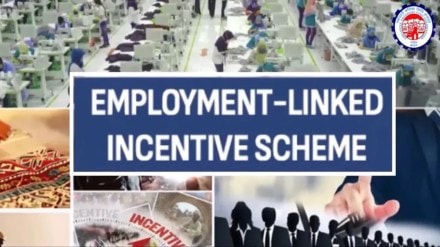By Puneet Gupta
The Employment Linked Incentive (ELI) scheme aims to nudge the organised sector to create more jobs via financial incentives to employers. An important outcome will also be formalisation of the workforce by extension of social security coverage to the new employees, explains Puneet Gupta
Who is covered under the ELI scheme?
The Employment Linked Incentive (ELI) scheme approved by the Union Cabinet earlier this month contains two parts – Part A for employees and Part B for employers. It has a planned outlay of Rs 99,446 crore. Both Part A and Part B of the ELI scheme is applicable to all sectors irrespective of industry / business, location, number of employees, etc. Part A covers first-time employees earning gross wages up to Rs 1 lakh per month, for whom a Universal Account Number (UAN) is created with the Employees’ Provident Fund Organisation (EPFO).
Part B covers employers which are hiring additional employees with gross wages up to Rs 1 lakh per month. Employers are required to be registered with the EPFO and hire at least two additional employees (for employers with less than 50 employees) or five additional employees (for employers with 50 or more employees).
Gross wages are the total emolu-ments payable to the employee in the wage month for which the electronic challan-cum-return (ECR) is being filed. Proper reporting of gross wages is important to determine eligibility.
What are the incentives available?
Part A offers one-month EPF wage up to Rs 15,000 per employee in two installments. The first installment will be payable after six months of service. The second installment will be payable after 12 months of service.
EPF wages, i.e., wages on which PF is contributed, is considered for determining payouts.
For the non-manufacturing sector, the incentive will be available for two years and for the manufacturing sector, the incentive will be available for four years from the date of joining.
Part B incentive is as under:
| Additional employee’s EPF wage slabs per month | Incentive per additional employee per month |
| Up to Rs10,000 | Up to Rs1,000 (proportionate basis) |
| Rs10,000 – Rs20,000 | Rs2,000 |
| Rs20,000 – Rs1,00,000 | Rs3,000 |
What are the underlying conditions?
Part A requires completion of a financial literacy programme by the employee to get the second instalment. A portion of the second instalment will be kept in a savings instrument of deposit account for a fixed period to encourage the habit of saving amongst employees. The incentive will be paid to employees through Direct Benefit Transfer mode using Aadhaar Bridge Payment System which makes it necessary for the employees to complete UAN activation and bank-Aadhaar seeding to avail the benefits under the ELI scheme.
Part B requires sustained employment for six months to enable the employer to enjoy the benefits. The employer needs to have a PAN-linked bank account. Non-manufacturing sector employers will get the incentive for 24 months. Manufacturing sector employers will get it for 48 months.
The benefits of the ELI scheme would be applicable to jobs created from August 1, 2025 to July 31, 2027.
Quantum of benefits
Part A: One-month EPF wage up to Rs 15,000 per first-time employee
Part B:
| Particulars | Non-manufacturing sector employer | Manufacturing sector employer |
| Amount of incentive per additional employee | Up to Rs 72,000 (Up to Rs 3,000 per month per additional employee X 2 years) | Up to Rs 1,44,000 (Up to Rs 3,000 per month per additional employee X 4 years) |
| Net additional employees | Estimated amount of incentive (Rs) | |
| 100 | 72 lakh | 1.44 crore |
| 1000 | 7.2 crore | 14.4 crore |
| 10000 | 72 crore | 144 crore |
Objectives of the scheme
The ELI scheme aims to incentivise the creation of more than 35 million jobs over two years. Of these, 19.2 million beneficiaries will be first-timers entering the workforce. Part B of the scheme is expected to incentivise employers for the creation of additional employment of nearly 26 million persons. Through the ELI scheme, the government intends to promote job creation in all sectors, especially in the manufacturing sector, besides incentivising youth joining the workforce for the first time. An important outcome of the scheme will also be formalisation of the workforce by extending social security coverage for millions of young men and women.
The writer is partner, People Advisor Services – Tax, EY-India.
Disclaimer: Views expressed are personal and do not reflect the official position or policy of FinancialExpress.com. Reproducing this content without permission is prohibited.
